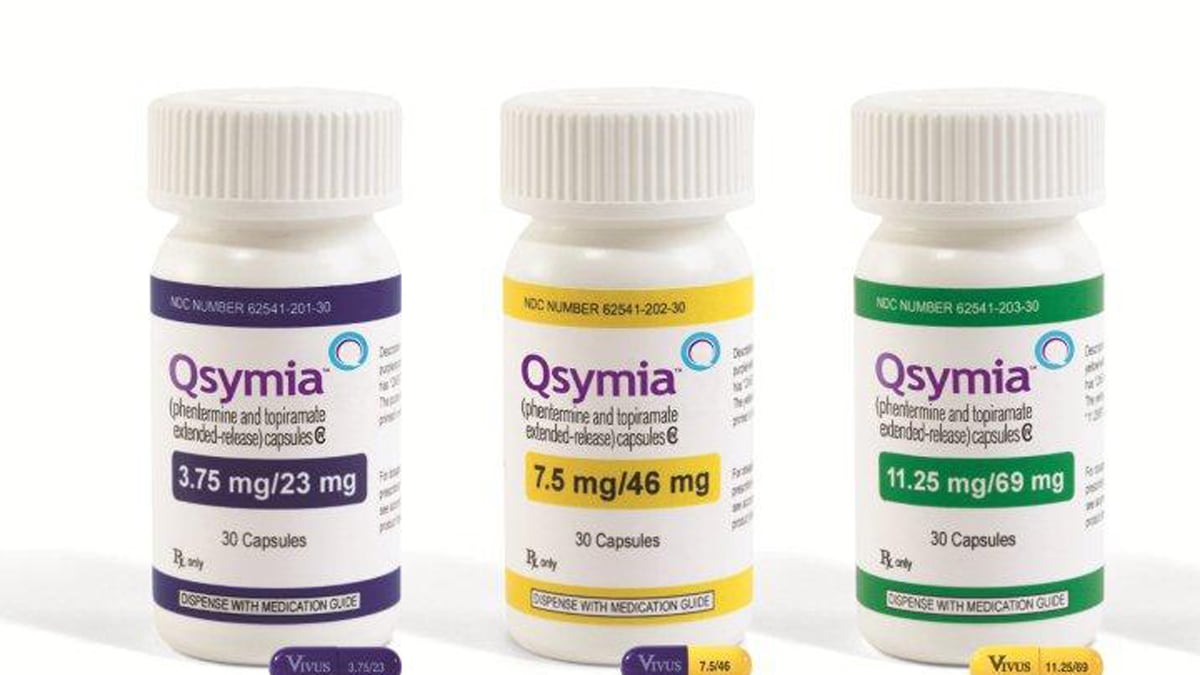This week, the U.S. Food and Drug Administration approved Qsymia, a new drug for the treatment of obesity that contains two active ingredients, phentermine and topiramate. It joins Belviq (lorcaserin), approved just last month, as the first anti-obesity pills green-lighted by the agency (which may be too busy spying on itself to worry about such things) in more than a decade.
And not a moment too soon. According to the Centers of Disease Control and Prevention, more than one-third of the adult U.S. population is obese, a proportion that has risen dramatically in the last two decades. The associated medical costs for the condition are about $147 billion annually, and about 300,000 people die each year die of obesity-related complications. The public has reacted as usual to the alarming scope of the problem—with avoidance of the facts, finger-pointing, claims of misinterpretation. More productively, though, the obesity epidemic has drawn the interest of pharmaceutical and medical device manufacturers, and now we now finally have some usable products.
The new pills bring us back to a grand moment in weight control only 20 years ago when the now discredited drug, fen-phen, ruled the roost. The pill actually worked, but quickly went up in a cloud of lawsuits once the substantial risk of heart-valve problems was identified. Like Qsymia, fen-phen (PDF) contained two drugs; one, phenteramine is present in Qsymia, while the other, fenfluramine, was the trouble-maker. Fenfluramine acts by increasing the levels of serotonin around a nerve’s synapse, not unlike today’s SSRI (selective serotonin release inhibitors) antidepressants such as Prozac, and conferred a sense of satiety. Phentermine, which is a chemical variation on amphetamine, was deemed safe but was not effective in weight control without its partner.
Enter Qsymia, which has added to the mix an odd-ball drug, topiramate, previously FDA-approved for epilepsy. Topiramate is unrelated to any other drug, and has been kicking around for years. Prior to now, it is has had only one infamous moment in the spotlight–its maker, Ortho-McNeil, was fined a cool $6.14 million for promoting its use (as Topamax) to psychiatrists for off-label indications such as treatment of bipolar disease. No one really knows how topiramate works on the brain, exactly, but it seems to influence a wide range of neuropsychiatric symptoms.

The other new kid on the block, lorcaserin (Belviq), contains just a single active drug that works along the same general serotonin pathway as the SSRIs and topiramate; lorcaserin does its stuff by increasing the density of specific serotonin receptors along the synapse. Indeed, for all the drugs that work the serotonin beat, the mechanism to increase serotonin varies substantially—which is logical since weight gain, not weight loss, is common with the Prozac-family of SSRIs.
The benefit of Qsymia and Belviq is modest but durable: For Qsymia, two trials that went a full year showed that patients had an average weight loss of about 8% (16 pounds for 200 pound person) compared to placebo. Not bad. Plus people who were destined to benefit showed response early—within 12 weeks. For Belviq, the weight loss was about 4 percent but also was durable to a year. In all studies, the pills are given in a combination with a careful diet and more exercise.
In addition to the pills, bariatric surgery—the high-end word of stomach stapling—is proving its value. With this approach, a person’s stomach capacity is physically shrunk and, with Clockwork Orange vividness, the patient learns to stay away from the big meal. Or else. The bariatric approach was shown effective in two New England Journal of Medicine articles earlier this year (here and here). In these studies, a surgeon’s scalpel proved superior to will power, lifestyle changes, self-esteem, and the rest of the self-help world’s greatest hits. In fact it wasn’t even close: the people who received surgery lost about 20 kilograms (44 pounds) more than those who gave it the old college try.
These advances are important for several reasons. First, the drugs should improve the health of countless people (assuming there isn’t a curveball side effect waiting to emerge). Second, treating obesity is likely to save the health-care system money. But most important, the work performs a critical task: it serves to pull obesity out of the realm of moral failing and into the arid, less dramatic, but thankfully more reality-based, world of medical disease. To control this particular epidemic, it is essential to leave the Sunday school view of obesity behind. Whatever mix of genetic, environmental, societal, economic, and psychological factors one sees as contributory, the facts are these: obesity is a serious and lethal medical condition.
Consigning obesity to the medical world places it on equal footing with other major American killers such as AIDS, cancer, and heart disease, and re-balances risk and benefit. In the world of science, numbers and tests and clinical trials are the coin of the realm, not tips on how to resist that extra slice of cake. Obesity isn’t sketchy, it’s a disease. Only here, free from sermons and bromides, can real progress to control obesity be made.






